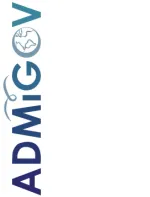The State of “Good Migration Governance”. Fieldwork main findings of the AdMiGov project

ADMIGOV Deliverable (2023)
In this article we draw conclusions about the state of “good migration governance” based on the findings in the six fieldwork related work packages (1-6) of the AdMiGov project. These work packages address migration governance and good migration governance with regard to entry (WP1), exit (WP2), circular migration (WP3), protection in the borderlands of Europe (WP4), protection for people on the move (WP5) and sustainable development (WP6).
As defined in the first AdMiGov report (D7.1), we understand “good migration governance” as “the multiphase, multi-site, multi-stage, multi-area, and multi-scale system of actors, relations, resources, policies and practices that well regulates international migrations” (Pasetti, 2019, p14). Based on the existing literature, AdMiGov defines the “goodness” of migration governance according to two main components. First, the instrumental component relates to the capacity of the governance system to reach the expected goals (effectiveness) with the least resources (efficiency). Second, the normative component consists of respecting the relevant agreements by the UN, which have been signed by most states in the world. In the field of migration, these include the New York Declaration (NYD), with the following Global Compacts on Migration and Refugees, and the Sustainable Development Goals (SDGs).